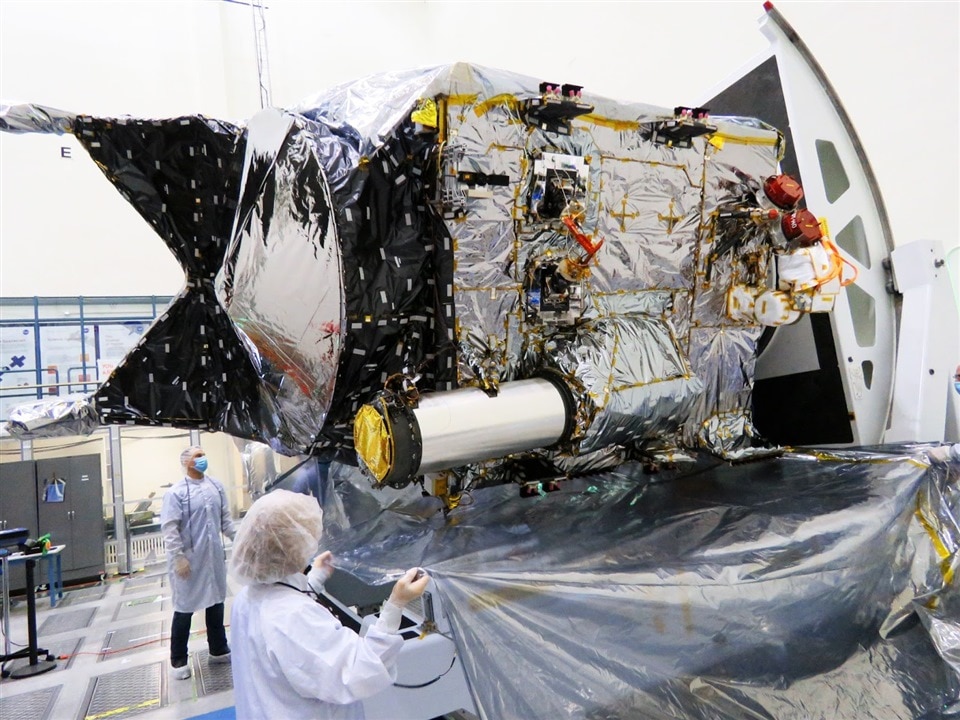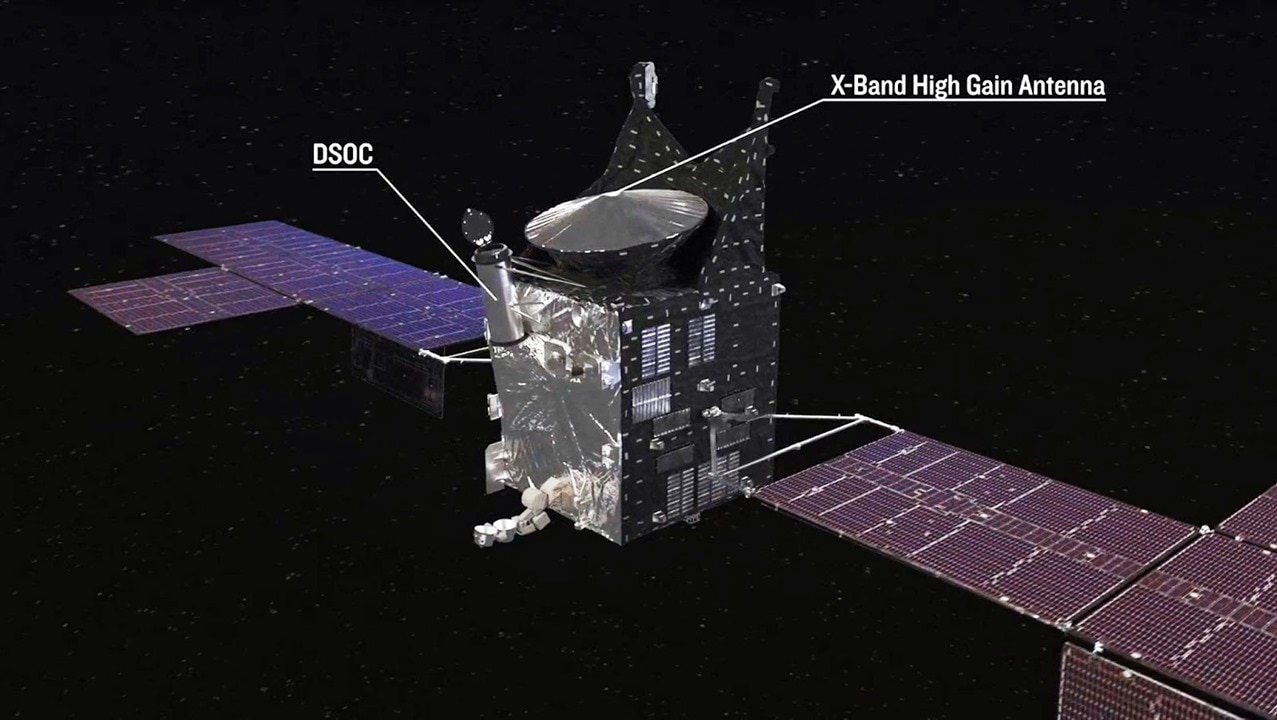
The DOSC flight laser transceiver aboard the Psyche spacecraft beamed a laser message from 10 million miles, reaching Earth in 50 seconds. (Image CreditL NASA/JPL-Caltech)
On November 14th, NASA transmitted data to Earth via a laser from ten million miles away, the longest distance ever recorded. The agency used its Deep Space Optical Communication (DSOC) aboard the Psyche spacecraft to achieve this long-distance experiment, taking fifty seconds to reach its destination. While this technology beams data 10-100 times faster than modern space communications, humans could use it for live video streaming from Mars.
During the early morning hours, the DSOC flight laser transceiver locked onto a powerful uplink laser beacon sent from JPL's Optical Communications Telescope Laboratory at its Table Mountain Facility. This beacon enabled the transceiver to point its downlink laser to Palomar, located 100 miles south of Table Mountain. All of that occurred as the transceivers' and ground stations' automated systems adjusted the transceivers' aim.
"Achieving first light is one of many critical DSOC milestones in the coming months, paving the way toward higher-data-rate communications capable of sending scientific information, high-definition imagery, and streaming video in support of humanity's next giant leap: sending humans to Mars," said Trudy Kortes, director of Technology Demonstrations for the Space Technology Mission Directorate at NASA Headquarters in Washington.
NASA used both the uplink/downlink laser to transmit test data during the experiment. The Psyche mission team works closely with this technology so the DSOC doesn't disrupt spacecraft functionality. Before testing the laser data transmission, the system must remove the protective cover for the flight laser transceiver and power the instrument. At the same time, Psyche tests its instruments for observing the Psyche asteroid in 2028 and activates the propulsion system.

The Psyche spacecraft carries the DSOC system and an x-band high gamma antenna. (Image Credit: NASA/JPL-Caltech/ASU)
Now that everything went according to plan, the team plans to improve the downlink-aiming system. This is necessary so that Palomar receives high-bandwidth data via the transceiver, even at varying distances from Earth. All the data is in bits encoded in the laser's photons. After those photons reach the Hale Telescope, a superconducting high-efficiency detector array senses them before they get extracted via new signal-processing methods.
Overall, the goal is to transmit data 10-100x faster than today's spacecraft using radio frequency systems. Optical communications are much better because data can be packed into tighter waves, which means ground-based stations acquire more data. Human and robotic-based missions can benefit from this, and it supports higher-res scientific instruments. "The primary objective is to give future NASA missions the tools for returning data at much higher rates," said Abi Biswas, project technologist for DSOC at JPL.
"Optical communication is a boon for scientists and researchers who always want more from their space missions, and will enable human exploration of deep space," said Dr. Jason Mitchell, director of the Advanced Communications and Navigation Technologies Division within NASA's Space Communications and Navigation (SCaN) program. "More data means more discoveries."
The DSOC is the first to be tested in deep space, unlike other optical communications from low earth orbit. Aiming the system over millions of miles away also requires extreme precision pointing. It must compensate for the time light takes to travel from the Pysche craft to Earth over those distances. We can expect it to take twenty minutes for DSOC's photons to travel from the spacecraft's farthest point from Earth. This suggests that both spacecraft and planet would move, so the uplink and downlink lasers need to adjust for those location changes.
To put this into perspective, laser communication might make it to Mars from Earth in about 3 minutes. So, a 6 minute loop. Beats the current RF loop of around 20 minutes.
Have a story tip? Message me at: http://twitter.com/Cabe_Atwell
